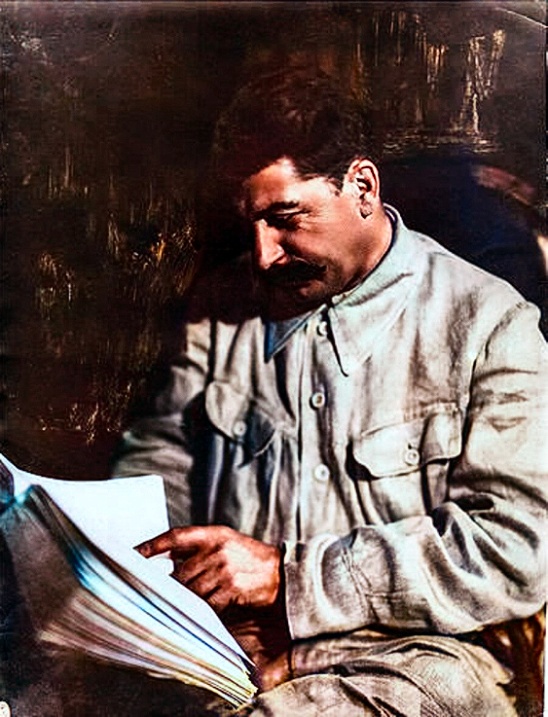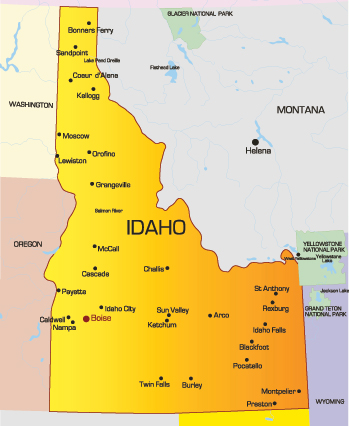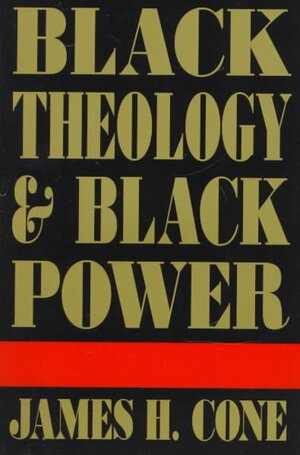Image of destruction in Mandalay, Myanmar, from Al Jazeera.
As if the ongoing civil war wasn’t enough, Myanmar has now been struck by a very powerful earthquake, resulting in 2000 deaths and thousands more injured as of the time of writing. Estimates are that the death toll could reach 10,000. Infrastructure like roads and bridges are damaged, and the hospitals are overwhelmed. The earthquake struck during Eid prayers, resulting in even higher casualties as several mosques collapsed. 20 million people already required humanitarian assistance in Myanmar, and now the situation there will be even worse. International rescue teams have rushed into the country, and aid is being raised, though with USAID experiencing the… changes that it is, the United States will be of even more limited help than usual. So far, China has sent $14 million, while USAID has supplied $2 million. In Thailand, the death toll seems considerably lower, though there has still been significant damage; a skyscraper under construction collapsed in Bangkok.
Myanmar is located very close to the boundary between the Eurasian and Indian tectonic plates. In particular, the country is divided in two by the north-south oriented Sagaing fault. This fault is typically strike-slip; that is, each side of the fault moves horizontally past each other. The earthquake’s depth was 10 kilometers, which is pretty shallow, and its proximity to the surface amplified the felt force of the earthquake. Additionally, the soft soil in this region tends to further amplify seismic waves through a process called liquefaction. Combine all this with the lackluster building codes due to many years of impoverishment and civil wars, and this explains why the death toll, and the expense to the country in general to repair damage, will probably be extremely high.
Last week’s thread is here.
The Imperialism Reading Group is here.
Please check out the RedAtlas!
The bulletins site is here. Currently not used.
The RSS feed is here. Also currently not used.
Israel-Palestine Conflict
Sources on the fighting in Palestine against Israel. In general, CW for footage of battles, explosions, dead people, and so on:
UNRWA reports on Israel’s destruction and siege of Gaza and the West Bank.
English-language Palestinian Marxist-Leninist twitter account. Alt here.
English-language twitter account that collates news.
Arab-language twitter account with videos and images of fighting.
English-language (with some Arab retweets) Twitter account based in Lebanon. - Telegram is @IbnRiad.
English-language Palestinian Twitter account which reports on news from the Resistance Axis. - Telegram is @EyesOnSouth.
English-language Twitter account in the same group as the previous two. - Telegram here.
English-language PalestineResist telegram channel.
More telegram channels here for those interested.
Russia-Ukraine Conflict
Examples of Ukrainian Nazis and fascists
Examples of racism/euro-centrism during the Russia-Ukraine conflict
Sources:
Defense Politics Asia’s youtube channel and their map. Their youtube channel has substantially diminished in quality but the map is still useful.
Moon of Alabama, which tends to have interesting analysis. Avoid the comment section.
Understanding War and the Saker: reactionary sources that have occasional insights on the war.
Alexander Mercouris, who does daily videos on the conflict. While he is a reactionary and surrounds himself with likeminded people, his daily update videos are relatively brainworm-free and good if you don’t want to follow Russian telegram channels to get news. He also co-hosts The Duran, which is more explicitly conservative, racist, sexist, transphobic, anti-communist, etc when guests are invited on, but is just about tolerable when it’s just the two of them if you want a little more analysis.
Simplicius, who publishes on Substack. Like others, his political analysis should be soundly ignored, but his knowledge of weaponry and military strategy is generally quite good.
On the ground: Patrick Lancaster, an independent and very good journalist reporting in the warzone on the separatists’ side.
Unedited videos of Russian/Ukrainian press conferences and speeches.
Pro-Russian Telegram Channels:
Again, CW for anti-LGBT and racist, sexist, etc speech, as well as combat footage.
https://t.me/aleksandr_skif ~ DPR’s former Defense Minister and Colonel in the DPR’s forces. Russian language.
https://t.me/Slavyangrad ~ A few different pro-Russian people gather frequent content for this channel (~100 posts per day), some socialist, but all socially reactionary. If you can only tolerate using one Russian telegram channel, I would recommend this one.
https://t.me/s/levigodman ~ Does daily update posts.
https://t.me/patricklancasternewstoday ~ Patrick Lancaster’s telegram channel.
https://t.me/gonzowarr ~ A big Russian commentator.
https://t.me/rybar ~ One of, if not the, biggest Russian telegram channels focussing on the war out there. Actually quite balanced, maybe even pessimistic about Russia. Produces interesting and useful maps.
https://t.me/epoddubny ~ Russian language.
https://t.me/boris_rozhin ~ Russian language.
https://t.me/mod_russia_en ~ Russian Ministry of Defense. Does daily, if rather bland updates on the number of Ukrainians killed, etc. The figures appear to be approximately accurate; if you want, reduce all numbers by 25% as a ‘propaganda tax’, if you don’t believe them. Does not cover everything, for obvious reasons, and virtually never details Russian losses.
https://t.me/UkraineHumanRightsAbuses ~ Pro-Russian, documents abuses that Ukraine commits.
Pro-Ukraine Telegram Channels:
Almost every Western media outlet.
https://discord.gg/projectowl ~ Pro-Ukrainian OSINT Discord.
https://t.me/ice_inii ~ Alleged Ukrainian account with a rather cynical take on the entire thing.

https://xcancel.com/incontextmedia/status/1906682710304649702Ibrahim Traore, Burkina Faso’s President has reportedly increased salaries of civil servants by 50% and reduced salaries for MPs, Ministers and politicians by 30%.
I met my wife’s zoomer cousins today for Eid and they’re all watching YouTube streams of iShowSpeed touring China. I looked up some of the highlights of those streams and I genuinely believe that shit is more effective for the improvement of China’s image amongst zoomer youth than a thousand articles by academic leftists titled “China’s prosperity boom” or whatever. Zoomers are watching and being impressed by how clean the cities are, the fact that the stream doesn’t lag in a high speed train in a tunnel, by how well-mannered Chinese youth are, and even trivial stuff like knowing about the Great Wall of China for the first time. 🇹🇼🇺🇦-bio creatures are seething in twitter replies about the evil SeeSeePee paying Speed to do these streams, while he’s chilling in the Chinese mountains learning Shaolin kung fu by a nice Chinese dude named Master Liang. The world has truly changed, no amount of leaflets and protests has even a fraction of the effect of one stream of this Speed guy eating spicy noodles while doing backflips in the Forbidden City next to Mao’s mausoleum.
Chinese soft power needs to be paying popular gen z influencers to tour the country atp
iShowSpeed is absolutely massive, I had no idea he was so big honestly. Over 30m Instagram followers, constant 150k+ viewers on his live streams, 37.5m YouTube subscribers, hell they even made him the fucking mayor of Lima in Peru for an hour when he was there. Outside of like Messi, Ronaldo and a handful other top athletes, he has to be one of the most popular people in the world right now. I wouldn’t be surprised if at least half of zoomers all over the world know who he is. I was looking at his Instagram today and I noticed that my zoomer cousins in Lebanon follow him and they don’t even know any English lol. I don’t think that the Chinese can get a bigger influencer than him right now, but who knows maybe communist tech can bring back Jesus Christ himself in 10 years and make him ride high speed rail and heal Chinese grandmas in Chongqing.
I’m older gen z myself and can confirm that Speed is very big for my generation lmao this was definatly good pr for China, here’s to many more
So who is this? Some new streamer guy? I can’t keep them all straight lol. Every time I learn one, there’s another one. By the time I learned who Mr. Beast was he already had like a whole media and food empire lol.
If I remember correctly, he’s the biggest streamer on Twitch
He’s the biggest on Youtube. I think Kai Cenat is still the biggest on Twitch.
deleted by creator
can they pay me
please
CPC randomly pics one hexbear user once every year from now on to tour the country and vlog themselves doing it
I’m Taiwanese-American and live in Taiwan. The CPC subsidizes tours of China at least for Taiwanese people. They kind of make it sort of like an academic exchange vibe.
I met my wife’s zoomer cousins today for Eid
Was there controversy in when it would fall? Apparently, some countries were observing Eid yesterday.
Well yeah, this shit is so goofy and happens every single year. So basically Muslims throughout history have been following the moon for our lunar calendar by doing moon sighting every month. They see a fresh crescent = new month starts tomorrow, they don’t see a fresh crescent = month starts one extra day later. Well humans figured out a few hundred years ago that one can do mathematical calculations to estimate the state of that crescent. Islamic scholars then disagreed if mathematical calculations and even sightings using telescopes count as valid evidence for the new crescent. Saudis a few years ago decided to fully switch to calculations, but to not upset the more conservative parts of the Islamic world, they just make up random eyesight evidence every single time. It was scientifically impossible for any person in the Arabian peninsula to actually see the crescent on Saturday, but that didn’t stop the Saudis and a few other countries from announcing the end of Ramadan and the start of Eid on Sunday anyway. Most Islamic countries including Egypt, Iraq, Syria and Iran didn’t celebrate Eid on Sunday and waited until today. My wife’s family celebrated today too, so our real gathering had to wait until today lol.
Ahaha we also have the same problem in Judaism, the custom in earlier times, the new moon would be spotted in the Jerusalem so a dude would have to go send a message to the other cities and the them the new moon was up. So outside Jerusalem these days, some people observe holidays for two days to be on the safe side. In the more liberal traditions outside Jerusalem we just celebrate one day, which the more hardline denominations do not agree
Screw the Great Wall of China, bring me some Green Wall of China coverage! I want to know how it is doing!!
The age/diversity gap between the “Hands Off” and pro-Palestine protestors in DC is really interesting.
I recommend looking up images of both and comparing them. You would expect there to be some difference, but the reality is jaw-dropping.
China, Japan, South Korea will jointly respond to US tariffs, Chinese state media says
hahaha holy shit. JPDON Don strikes again
Trust the plan 😇👼🙏
Reddit going insane about krasnov or whatever is a cover by the CPC since comrade Trump actually is a MSS agent.
evangelical dad in beijing go on trueanon
i had to check that it wasnt from those shitposters at globaltimes. i can’t believe that Trump got the East Asian countries together?!? that hasn’t been a thing…ever?
What is JPDON?
Joint Dictatorship of the Proletariat of Oppressed Nations.
It’s a Maoist Third Worldist thing.
In addition to what Babs said, it’s a joke that Trump is intentionally sabotaging the US.
It would be interesting if something concrete actually comes out of that, but I’m not really holding my breath on this due to the whole Japan and S.Korea being a US neo-colony.
not much, as soon as people calls Trump`s bluff it would fall out.
it`s not the first time you have talks about an East Asian trilateral economic zone/trading bloc thing, it just doesn’t make sense economically in the past
welcome back Asian Co-properity sphere
deleted by creator
no it
s fine, i just didnt expect 豊臣 秀吉 to be Chinese
I wonder if a secondary affect of this could be helping facilitate american capital coming into china via korean/japanese vassals
Now lets see how quickly Europe folds!
17 teslas were lit on fire yesterday in a car dealership in Rome, didn’t think this movement was international lol
Edit: link https://www.cnn.com/2025/03/31/europe/tesla-cars-fire-rome-intl/index.html

Lmao Degrowth Donald is taking control
Right after Booker ended his “epic” filibuster, the GOP leadership brought up Trump nominee for NATO ambassador Whitaker. All Democrats and Republicans agree to advance this Trump nomination by unanimous consent. LMAO.
March for Palestine in DC today
I’m on the bus and ready to represent Hexbear


Trump tariffs on Israel: 17%. Trump tariffs on Iran: 10%.
Rare Trump W.

Trump administration orders half of national forests open for logging
Lettin it rip baby
CW: Gaza aid workers being ambushed and executed by IDF
Israel previously claimed that the ambulances “approached suspiciously” with their headlights and emergency lights off. Video proves otherwise.
It still kind of stuns me every time I realize the camp the migrants are being taken to is within driving distance from me. I’ve been in that area many times. Even dated a woman who worked for Bukele when he was mayor of San Salvador. At the time she was convinced that he would solve the crime problem for good and had a personal investment in it after she experienced attempted SA from a gang member. She ended up giving my personal info to his fans years later and they’ve been threatening me since then lol
When it was being built I stopped by to see the site and said it wouldn’t be long before Guatemalans were sent there under the false premise of being related to gangs. Looks like that came true. I should really do a write-up on the Northern Triangle. It’s receiving a lot of attention now and some of the takes make me realize just how little about the region people know.
Red Crescent releases video showing Israeli [sic] murder of first responders | The Cradle
Mobile phone video shows Israeli [sic] troops killed 15 Palestinian rescuers despite flashing emergency lights and sirens marking their vehicles as ambulances
as @companero pointed out elsewhere
Israel [sic] previously claimed that the ambulances “approached suspiciously” with their headlights and emergency lights off. Video proves otherwise.
Incredible headline



















